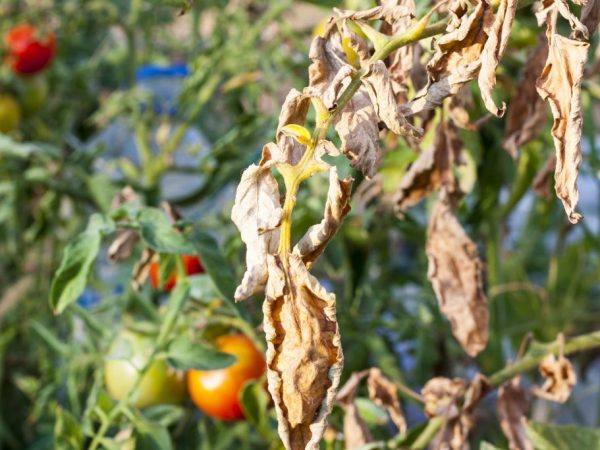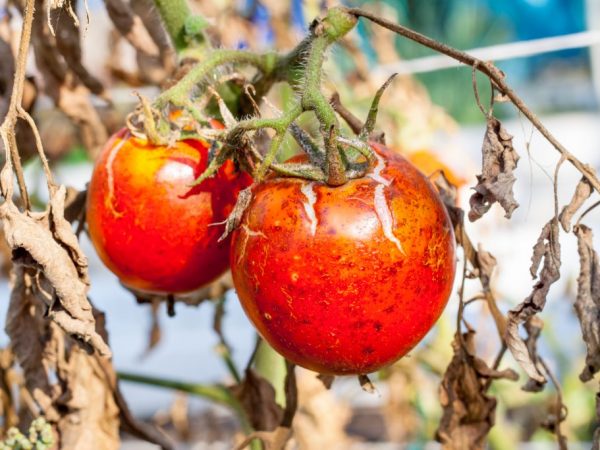Symptoms and treatment of tomato alternaria
Tomato Alternaria is a very serious disease, which is also known as a dry wound of fruits, dry spots, brown manifestations, macrosporiosis and other similar names. An interesting fact is that it is actually quite difficult to understand and distinguish such a disease at an early stage. This disease is caused by the fungus Alternaria.

Symptoms and treatment of tomato alternaria
What affects the development of Alternaria
The most important thing that needs to be understood is that Alternaria is very quickly transmitted, therefore, when one plant is sick, then more than 96% of the fact that the nearest plants have also become infected, and as a result, neighboring bushes. Therefore, if you do not notice and see the symptoms of Alternaria in time, this can lead to the fact that all your plants and fruits, along with other plants, will be completely infected within a few weeks.
Also, you should carefully look for any mechanical damage, since this way a very large percentage of the fungus getting into the open "wounds" of the bush. Especially carry out the prevention of those areas that you cut off.
- The development of such a fungus is strongly influenced by high temperatures, including high heat.
- Also, there are sudden changes in high temperature to low temperature, this happens when a hot day turns into a cold night.
- Also, frequent torrential rains greatly contribute to the rapid development of the virus, and fungi penetrate the stems of the bushes.
Under normal conditions, the incubation period is 2 to 4 days, sometimes it happens that the period is 6 days.
Any plant debris that you have not removed or burned can be sources of fungi, and continue to infect healthy plants with the help of winds. Therefore, all fruits, bushes, leaves, stems must be immediately destroyed, it is best to burn them. Tomato Alternaria can infect with its fungi not only the tomatoes themselves, but also potatoes, eggplants, peppers, tobacco, which, in turn, can also become sources of the disease.
How does the virus manifest itself in plants
A similar disease affects fruits in varying degrees of development. Alternaria can affect both young and old fruits. In addition, you can understand that the virus is in the stem quite late, and then it will be very problematic to cure the bush. Also, one of the main reasons for the appearance of such an ailment may be a transplant into open ground and at the same time not prepare the bushes for this, and not carry out root prevention. This ailment is striking:
- many leaves from the bush;
- plant stems;
- the main petioles are leaves;
- almost all fruits and stalks.
Therefore, we can say with complete confidence that such a virus infects almost all the main organs of the plant. This disease is very characteristic of large, rounded spots that look as if the area is rotten and sunken. Such spots can appear on the leaves and fruits, sometimes it can be found on the stems. Dry circles can be of various sizes from 1 mm to 2-4 cm.Most often, on tomatoes, such a disease looks like an uneven brown circle and a completely dry area.
As soon as you notice such spots on a tomato, after a few days the leaves will begin to dry, and then the plant will completely die, and it will be impossible to bring it back to life. If on the stem you see oblong gray lines that are a little compressed, it means that your bush already has a virus, but so far it is only at the stage of development. Also, if the stem is not treated, then, as a result, it will lead to the fact that it will dry out.
Disease activity period

The plant is sick during the period of fruit ripening
Most often, the period of disease activity falls on the ripening period of tomatoes. At this stage of its development, the virus appears as small brown spots on the leaves, and then on the base of the fruit. Alternaria can manifest itself "well" when the temperature in the greenhouse rises sharply. Then the areas that have been affected, but have not yet manifested themselves, are covered with black and velvet mold.
Those tomatoes that are infected ripen three times faster or fall off immediately. According to experts, the virus poses the greatest danger at the time of ripening of all fruits. All due to the fact that the disease penetrates into the very seeds of future fruits. After that, the tomatoes abruptly lose their shine, color, become dark and dull, and then begin to rot. Such viruses are carried by air and rainwater.
How to avoid alternaria
The very first and most important condition and advice from experienced gardeners is to choose those varieties of fruits that have good resistance to various types of diseases. Thus, you will deprive yourself of many problems and difficulties with carrying out many different preventive measures. You need to know that all seeds were collected only from healthy fruits and plots.
After you receive or purchase seeds, you need to cleanse them of all residues of fruits, earth and other materials, as they can cause future infection. You can also carry out simple actions against Alternaria with the help of advanced fungicides. This is an excellent method of fighting not only against Alternaria, but also against other diseases.
In addition, do not forget to alternate all crops correctly: in no case should the tomatoes be returned to the area where they were already before, since then the earth will not have time to recover its strength, and the next bushes will no longer be able to be as strong due to lack of vitamin and calcium.
Preventive methods
As mentioned earlier, remove and burn all infected areas as far from your crop as possible, since even after they have been destroyed, they can spread the fungus down the wind. Follow the planting and prophylaxis rules at all times. Fertilize the soil and swap everything. In no case should you plant tomatoes on those areas where there used to be eggplants, potatoes, peppers and cabbage. It is best to plant in areas where onions, cucumbers, grasses and legumes have previously grown. They do not “test” the soil much, and Alternaria cannot be transmitted.
Never forget to fertilize the soil with special mixtures of calcium and essential vitamins. As soon as you see the first symptoms of the disease, immediately prevent all bushes with a fungicide. It is difficult to get rid of tomato Alternaria in the active stage. According to the description of many experienced gardeners, Alternaria can be recognized even at the earliest stages. You just need to take one leaf from the bush and set it on fire, if it starts to burn, then there is no disease, if not, then most likely the plant is sick.
From the first signs to the last stage (death), it will take from 10 to 15 days. But the treatment can last for 3 weeks.The main thing is to pay attention to all the symptoms of the disease in time and carry out all the necessary methods in order to avoid the death of the entire variety.


